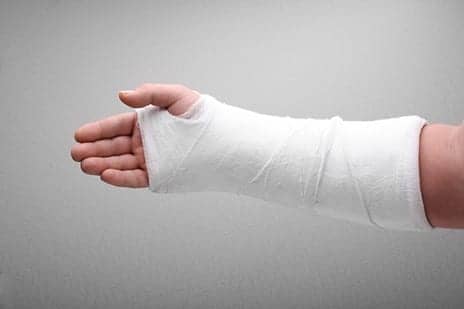A newly discovered population of “messenger” cells may provide answers to how bones heal and how they could heal better, according to a recent USC Stem Cell study published in the journal eLife.
“With nearly half a million patients in the US experiencing failed bone repair every year, stimulating these ‘messengers’ and other key cell types could accelerate repair and prevent non-unions,” says corresponding author Francesca Mariani, an associate professor of stem cell biology and regenerative medicine, and integrative anatomical sciences at the Keck School of Medicine of USC, in a media release.
In their study, first author Stephanie T. Kuwahara and her colleagues looked at the mammalian rib bone, which regenerates uncommonly well.
By observing similar rib surgeries in mice, the scientists proposed a model for how mammals repair large bone injuries, and identified key cell types essential to the healing process.
One of these key cell types is a small population of “messenger” cells, which can be identified by the activity of a gene called Sox9. These messenger cells reside in the sheath of tissue, called the periosteum, which surrounds each rib.
Upon injury, a protein called “Hedgehog” activates the messenger cells, which in turn tell neighboring cells to differentiate into a hybrid between cartilage and bone. These hybrid cells form the “repair callus” that converts into newly regenerating bone, the release explains.
“Future investigations into how messenger cells promote callus formation may lead to better strategies of boosting bone repair in other parts of the body that do not heal as effectively as the ribs,” Mariani states.
The scientists also note that while hybrid bone-cartilage cells play a critical role in regenerating injured ribs, they are surprisingly absent while the ribs originally form during embryonic development.
This calls into question an existing dogma in many biology textbooks: that regeneration is a recapitulation of development. Instead, regeneration and repair may be their own distinct processes, involving unique cell types and genetic programs, per the release.
[Source(s): University of Southern California – Health Sciences, Science Daily]
In their study, first author Stephanie T. Kuwahara and her colleagues looked at the mammalian rib bone, which regenerates uncommonly well.
By observing similar rib surgeries in mice, the scientists proposed a model for how mammals repair large bone injuries, and identified key cell types essential to the healing process.
One of these key cell types is a small population of “messenger” cells, which can be identified by the activity of a gene called Sox9. These messenger cells reside in the sheath of tissue, called the periosteum, which surrounds each rib.
Upon injury, a protein called “Hedgehog” activates the messenger cells, which in turn tell neighboring cells to differentiate into a hybrid between cartilage and bone. These hybrid cells form the “repair callus” that converts into newly regenerating bone, the release explains.
“Future investigations into how messenger cells promote callus formation may lead to better strategies of boosting bone repair in other parts of the body that do not heal as effectively as the ribs,” Mariani states.
The scientists also note that while hybrid bone-cartilage cells play a critical role in regenerating injured ribs, they are surprisingly absent while the ribs originally form during embryonic development.
This calls into question an existing dogma in many biology textbooks: that regeneration is a recapitulation of development. Instead, regeneration and repair may be their own distinct processes, involving unique cell types and genetic programs, per the release.
[Source(s): University of Southern California – Health Sciences, Science Daily]





